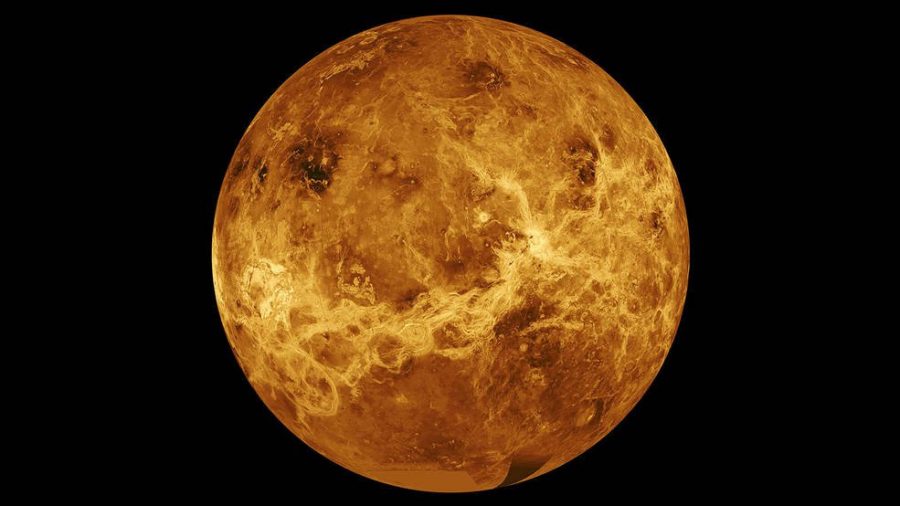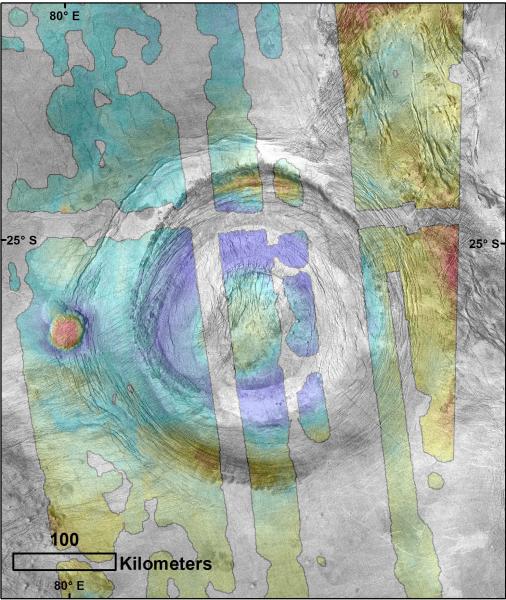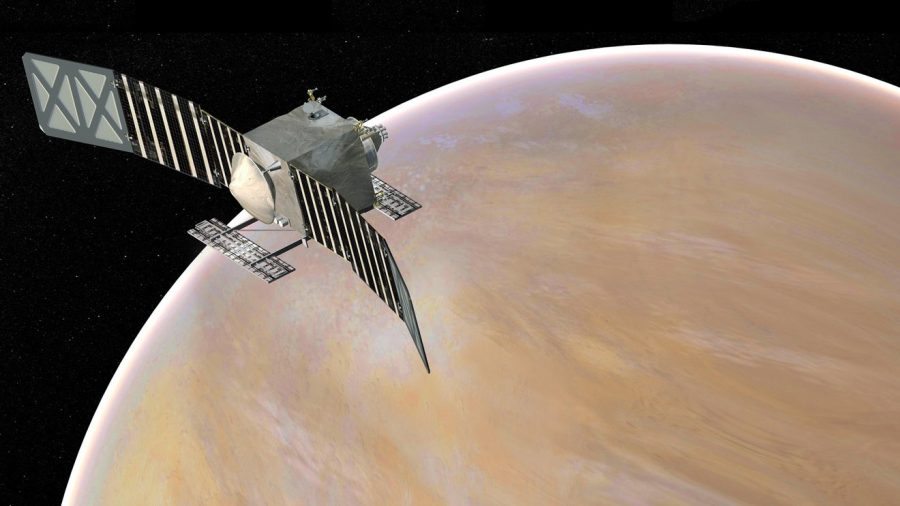Scientists found a strange little volcanic feature on the edge of a Venusian corona, giving further credence to the theory that the planet has a thin outer layer and an active interior.

NASA
NASA’s Magellan orbiter gave us our first and only good look at the surface of Venus in the 1990s. Its radar maps have provided scientists with an incredible wealth of geologic information, especially in the last 10 years as higher-resolution renderings of the data have become available. Scientists Megan Russell and Catherine Johnson (both at University of British Columbia and Planetary Science Institute) recently published an analysis of a peculiar feature in the Journal of Geophysical Research: Planets. Their results add to a growing consensus that Venus is geologically active.
The focus of the study is Narina Tholus, a steep-sided volcanic dome on the edge of Aramaiti Corona. Coronae are a common sight on Venus, though rare on Earth. They look like giant oval buttons and are thought to be created by volcanic upwellings, which eventually collapse in the center. The presence of these features is likely part of the key understanding to understanding how Venus loses heat when it has no tectonic plates like Earth does. Researchers have conducted modeling studies that suggest Aramaiti is only 1.4 million years old, making Narina, which clearly formed afterwards, even younger.

Planetary Science Institute
“This volcanic dome is probably just taking advantage of the fact that there's already magma beneath the surface associated with the bigger corona,” Russell says. “So the lithosphere is already a bit thinner there, it’s fractured, which allowed the lava forming Narina to rise up and erupt.”
Russell used a method of predicting heat flow under the Venusian surface that has been used extensively to study volcanic activity on Earth. She took radar images of the feature and its surroundings. Then she made a computer model to predict the effects of the dome’s “load” on the surrounding ground. She ran the model many times with different lithosphere thicknesses. The iteration that most closely matched the actual shape of Narina Tholus had a lithosphere much thinner than Earth’s, which averages around 30 km deep.
“We made an educated guess that [Venus’s] lithosphere was somewhere between 1 kilometer thick and 25 kilometers thick,” Russell says. “Then we estimated the mass of the volcano and guessed how that would affect the surface. We calculated that for 25 different thickness values, and we found a number that best fits what we see.” Russell’s team found a thickness of around 3.9 to 9.1 km.
Russell’s results are consistent with other recent Venusian geology studies. (See “Venus Surface Is Fragmented Like “Pack Ice”) Paul Byrne (NC State University), a Venus expert who was not involved with this project, agrees that it builds on the growing view that Venus is an active world.
“They've used very established techniques,” Byrne says. “And they’ve been able to get results consistent with volcanic activity that is relatively geologically recent. This is important because anything that's relatively recent is probably ongoing.”
But it isn’t possible to make firm conclusions about how typical Narina is without doing this kind of analysis on other, similar hills, and the type of high-resolution data needed is currently available for only about 20% of the planet. Russell has found 13 other coronae with steep-sided domes; however, none of those had the flexing pattern which she used to measure the underground heat flow. This means that Narina is unusual but not necessarily unique, and it makes it hard to say for sure exactly how these kinds of formations take shape and how old they are.

NASA / GSFC
The study opens up the genuine possibility that volcanic features like this one could be geologically young, with characteristics resulting from an active interior that future missions, such as NASA’s VERITAS and DAVINCI+, and the ESA’s EnVision will be able to detect. Russell hopes one of these missions can dedicate observation time to small features like Narina Tholus.
“If we can get good images over the same area, seeing any type of movement on the ground,” she says, “that could add additional evidence for recent activity to support our heat flow calculations, and the conclusions about how thin the lithosphere is there.”
Before Venus-bound missions launch in the early 2030s, NASA and ESA will hear proposals from the scientific community about which geological features to focus on. If Russell has her way, then it won’t just be the large-scale chasms and plains that get all the attention. Size isn’t everything; a weird little volcano may have just as vital a story to tell about the evolution of Venus as the vast plain it sits on.
 0
0
Comments
You must be logged in to post a comment.